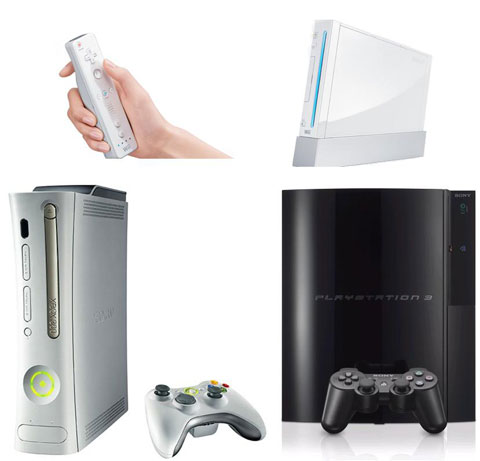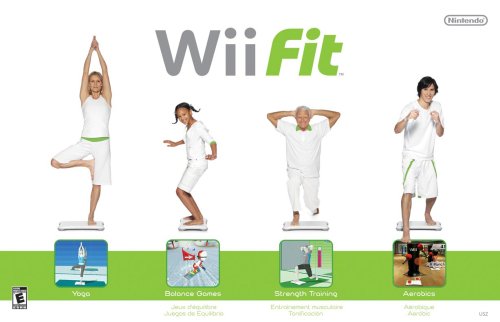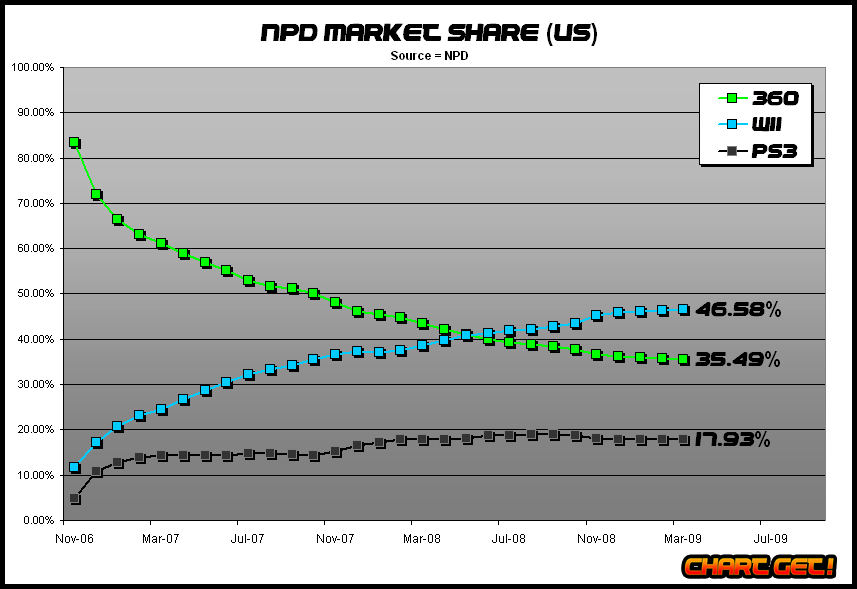
Four years ago, video game makers released what is known as the seventh generation of video game consoles. This period began in 2005 with Microsoft's release of the Xbox 360, and went on to include Sony's PlayStation 3 and Nintendo's Wii, both released in November 2006. Here, we will specifically look at the Xbox 360 and the Wii and compare and contrast the marketings strategies of each console.
When the Xbox first came out, it’s biggest assets were its graphics. The Xbox 360 introduced a higher resolution HD gaming experience. Microsoft used this to their advantage and focused their efforts on appealing to the typical “hardcore gamer” crowd. This demographic is defined as “Young men who play intensively and have a disposable income”. In fact, Microsoft used it’s reputation in computers to attract gamers by offering “the most powerful computer ever sold specifically for gaming." (Dyer-Witheford).

The Xbox was built to symbolically exude “nuclear energy” (Dyer-Witheford), hence the green light. It highlighted youth and masculinity, again focusing on the informed gamer who would also invest in more games and products that a casual gamer. In fact, analysts noted that Microsoft would lose money for each Xbox console sold, and that they were depending on making a profit from royalties, actual games, and Xbox Live subscriptions. (Xbox Logo)
Of all its features, Xbox is perhaps best known for its Halo series of games. In fact, more than 40 million copies of Halo have been sold worldwide. In total, Halo merchandise has grossed more than $2 billion. Halo reaches out to Microsoft's ideal Xbox user- hardcore gamers. Just take a look at the Halo 3 add at the link below.
http://www.youtube.com/watch?v=jggz2wPnm2o&feature=related

Nintendo, on the other hand, took a completely different approach to their target audience. They promoted the Wii as a game console for everyone. In a a clever ad campaign, two Japanese men visited various diverse homes to introduce them to the Wii. The company invested $200 million to run the ads, which featured the clever slogan “Wii would like to play”. The ads depict a variety of people, from suburban families to country folk to grandparents enjoying the Wii. Nintendo focused on the ease of gameplay, changing their target audience from traditional gamers to a more general audience.
Here is a link to a Wii advertisement.
http://www.youtube.com/watch?v=g2nEHqGWsYM
Even with the name, the Wii has a different goal altogether. As Nintendo’s website displayed after the announcement of the name, “"Wii sounds like "we," which emphasizes this console is for everyone. Wii can easily be remembered by people around the world, no matter what language they speak” (Wii at Nintendo).
You might remember another of Nintendo's marketing tools from trips to the mall for Christmas shopping. The Wii Mall Experience featured trained representatives who showed visitors "a new way to play" (Wii Mall Experience). Once again, this highlighted the ease of the game and the accessibility to many different types of gamers.
Even Santa's in on the fun!
Price was another factor in the sales of these two consoles. The PS3 and Wii were both released at about the same time. The Wii’s price was $250, a higher price than consoles in the past. However, in comparison to the PS3’s enormous price tag of between $400 and $500, the Wii seemed to be the smarter choice for many buyers. The XBOX 360 became the alternative, a less expensive console, but also not as new or innovative.
Recently, we have seen a general shift in new games and gaming consoles to being more active and appealing to a wider variety of people. Sony’s Playstation Move takes it’s cue from the Wii, with controllers that sense one’s movement. The Xbox Kinect offers a something new- it can sense movement without the need for controllers. Nintendo also has a new project, kept under wraps, that is plans to unveil at the E3 Gaming Expo Summer 2011.
Finally, some food for thought. Here are a few charts depicting sales of seventh generation game consoles, found on the video games sales Wiki page.

Dyer-Witheford, Nick, and Peuter Greig De. Games of Empire: Global Capitalism and Video Games. Minneapolis: University of Minnesota, 2009. Print
"Seventh Generation of Video Games." Video Game Sales Wiki Web. 30 May 2011.
"Wii at Nintendo." Nintendo. Web. 30 May 2011.
"Wii Fit « Hung Truong: The Blog!" Hung Truong: The Portfolio. Web. 30 May 2011.
"Xbox Logo." Xbox.About.com - Microsoft Xbox and Xbox 360 News and Reviews. Web. 30 May 2011.




.png)
